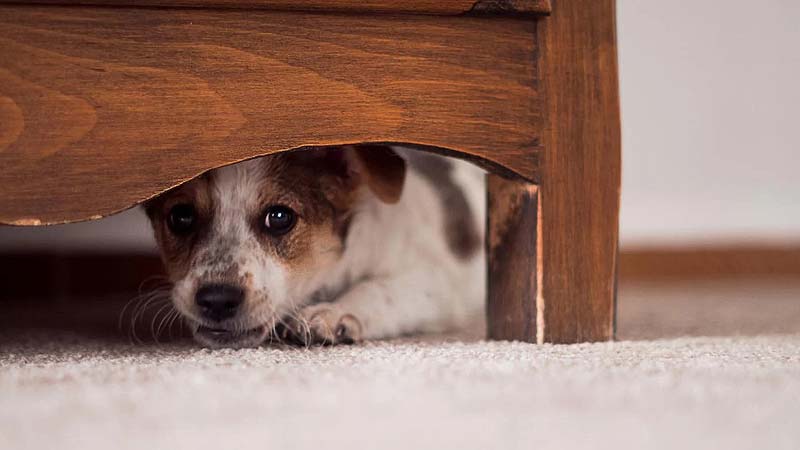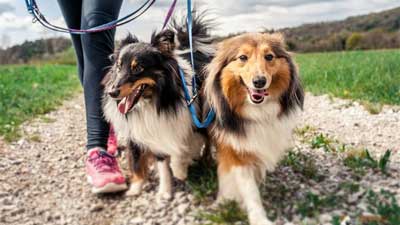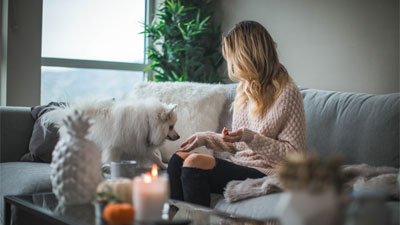- Size
- Smallest
- Small
- Small to Medium
- Medium
- Large
- Giant
- Characteristics
- Smartest
- Hypoallergenic
- Fluffy
- Best Guard
- Best Family
- Best for Kids
- Low Shedding
- Healthiest
- Police Dogs
- Most Calm
- Quietest
- Color
- White
- Black
- Grey
- Brown
- Blue
- Red
- Coat
- Hairless
- Short
- Long
- Origin
- Japan
- China
- Australia
- Germany
- Italy
- United States
- France
- Group
- Hound
- Terrier
- Herding
- Toy
- Working
- Sporting
Helping Your Dog with Desensitization and Counterconditioning

What Is Desensitization?
Desensitization is a systematic process that involves gradually exposing your dog to fear-inducing stimuli in a controlled and safe environment. The primary goal is to present the trigger at a level where it doesn't provoke a negative response, allowing your dog to acclimate without experiencing overwhelming fear or anxiety.
What Is Counterconditioning?
Counterconditioning, often used alongside desensitization, reverses negative reactions into positive ones. For instance, if a dog reacts negatively to a passing person, counterconditioning can associate that person's presence with positive experiences like treats or praise.
Helping Your Dog with Desensitization and Counterconditioning
Modifying a dog's behavior using desensitization and counterconditioning techniques can be a powerful and gradual process. These methods aim to transform a dog's negative reactions toward specific triggers into positive or neutral responses. Implementing these techniques effectively involves a step-by-step approach:
Identifying Triggers:
Observational skills are crucial in pinpointing triggers—be it a specific sound, smell, sight, person, or object. Dogs often exhibit subtle signs of distress before a full-blown reaction. Identifying these initial cues aids in accurate trigger recognition.
Implementing Gradual Exposure:
Initiate desensitization by introducing the trigger from a distance where your dog remains calm. Reward calm behavior with treats, praise, or play, fostering positive associations. Gradually decrease the distance or intensity of the trigger while maintaining positive reinforcement.
Integrating Counterconditioning:
Counterconditioning complements desensitization by transforming your dog's negative response to a trigger into a positive one. This technique involves pairing the trigger with enjoyable experiences to replace fear or anxiety with comfort and pleasure.
Reinforcing Positive Behavior:
Whenever the trigger appears and your dog refrains from exhibiting fear or anxiety, provide rewards. Treats, toys, verbal praise, or affection serve as positive reinforcement, encouraging your dog to associate the trigger with pleasant experiences.
Starting Small, Progressing Gradually:
Initiate counterconditioning with subtle triggers and gradually escalate to more intense ones. For instance, if your dog fears a specific sound, begin with low volumes and gradually increase the noise level as your dog becomes more comfortable.
Patience and Consistency:
Both desensitization and counterconditioning require patience. Rushing the process can instill further fear and hinder progress. Each dog responds differently, and the pace of training should align with your dog's comfort level. Consistent practice and positive reinforcement are crucial elements for successful behavior modification.
Consulting a Professional:
Seek guidance from a veterinarian or a certified animal behaviorist for personalized advice and to ensure that the training regimen suits your dog's specific needs. They may offer supplementary recommendations to alleviate anxiety and enhance the learning process.
Conclusion
Utilizing desensitization and counterconditioning techniques can effectively improve a dog's response to triggers causing fear or anxiety. Through gradual exposure, positive reinforcement, and patience, these techniques can help your dog overcome fears and anxieties, fostering a more relaxed and confident demeanor. Remember, a tailored approach and consistent practice are key to achieving successful behavior modification in your beloved pet.
You May Also Like
 Dog AttacksWhen Dogs Attack: Holding Pet Owners Accountable for Personal Injuries
Dog AttacksWhen Dogs Attack: Holding Pet Owners Accountable for Personal Injuries Help & AdvicePawsitive Health Habits: A Guide to Keeping Your Dog in Top Shape
Help & AdvicePawsitive Health Habits: A Guide to Keeping Your Dog in Top Shape Help & AdvicePet Compatibility Test: Finding Your Ideal Animal Companion
Help & AdvicePet Compatibility Test: Finding Your Ideal Animal Companion Dog Training TipsHow to Train a Dog To Poop and Pee in One Spot
Dog Training TipsHow to Train a Dog To Poop and Pee in One Spot Breed Reviews8 Great Choices: Best Medium-sized Dogs For Beginners
Breed Reviews8 Great Choices: Best Medium-sized Dogs For Beginners Help & AdviceThese 10 Dog Breeds Novice The Best Not To Keep!
Help & AdviceThese 10 Dog Breeds Novice The Best Not To Keep!